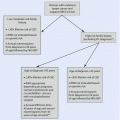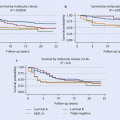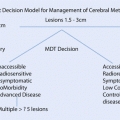© Springer International Publishing AG 2018
Lynda Wyld, Christos Markopoulos, Marjut Leidenius and Elżbieta Senkus-Konefka (eds.)Breast Cancer Management for Surgeonshttps://doi.org/10.1007/978-3-319-56673-3_1616. The Breast and Oncoplastic Multidisciplinary Team
(1)
Royal Marsden Hospital, Fulham Rd, London, UK
16.1 Introduction
16.2 Definitions
16.5 The Breast MDT
16.5.1 Core breast MDT
16.8.1 The Team
16.9.1 MDT Benefits
16.12 Oncoplastic MDT
16.12.1 Introduction
16.13 Definition
16.13.1 Oncoplastic Breast Surgery
16.13.4 Setting Up Oncoplastic MDMs
16.15.1 Patient
16.15.2 Surgeon
16.15.3 Institution
16.15.4 Academic
16.16.1 Attitudes
16.16.2 Skills
Keywords
Multidisciplinary teamsMDTMultidisciplinary meetings (MDMs)Tumour boardsOncoplastic teams16.1 Introduction
Cancer-specific multidisciplinary team (MDT) working is now well established in many countries worldwide. The objective of MDT working is to optimize breast cancer outcomes using effective evidence-based treatments, reduce cancer mortality and morbidity as well as provide a high-quality and seamless patient experience.
Whilst MDT working is regarded as the ideal model of cancer care and is evidence of a specialist cancer service, direct improvements in cancer survival outcomes have been difficult to prove [1–3], but other benefits such as more breast conservation and immediate reconstruction and standardized access to systemic therapies and other indicators of quality care are well evidenced.
However, as the complexity of breast cancer management rapidly increases, the need for MDT working to ensure optimal treatment has never been more important. Our better understanding of the biological heterogeneity of breast cancer [4] combined with the advent of biologically targeted systemic therapies offers evermore treatment options, requiring sophisticated personalized treatment planning. In view of this, the MDT remains pivotal to the delivery of optimal cancer care.
Effective, integrated multidisciplinary working is not easy to achieve within highly complex and often fragmented healthcare environments – MDT core personnel, organization and processes will vary from hospital to hospital and country to country, but the underlying principle remains the same: patient-focused interdisciplinary communication and working aimed at delivering a high-quality patient experience and optimizing treatment and cancer outcomes. Patient participation in treatment planning should be encouraged and supported as their values and preferences will refine and personalize the final treatment plan. although direct patient involvement in the MDT is not a current practice it seems to be to be effective and well received when implemented [5].
16.2 Definitions
A breast multidisciplinary team (MDT) can be defined as a group of specialists in breast care who can make a unique contribution to the treatment plan and management of an individual patient. The multidisciplinary meeting (MDM) is the forum in which these individual contributions can be formulated into a coherent documented plan. The United Kingdom (UK) Department of Health defines the MDT and MDM as «a group of people from different healthcare disciplines who meet to discuss individual patients and who are each able to contribute independently to the diagnostic and treatment decisions about the patient» and provide detailed quality standards for MDT provision in the UK [6].
16.3 Specialist Cancer MDTs and Services: The History
Before the early 1990s, only a small proportion of women benefited from specialist breast MDT working in a handful of dedicated breast centres. Diagnostic assessments and cancer treatments were usually performed by generalists who did not have breast-specific knowledge and skills. There was little interaction between surgeons (who were usually the first and main caregivers) and the other disciplines of radiology, pathology and oncology. Consequently important factors relevant to best treatment planning were missed or not discussed, and patients were not always offered all potentially beneficial treatments such as endocrine therapy, chemotherapy and radiotherapy resulting in suboptimal care and outcomes.
In addition, data was not collected to support research, audit and service improvement, and patients had little access to high-quality information, or specialist nurse support and their care was fragmented between community, hospital and other services. In England in 2000, only 20% of cancer patients were managed by a specialist team, increasing to 80% in the mid-2000s [2, 7].
To address these challenges, specialist cancer teams and services were developed evolving to the current well-known model of MDT working. In the UK, MDT working was regarded as integral to the successful delivery of the National Health Service (NHS) breast screening programme (NHSBSP), established in 1987, and MDT discussion became an important quality metric, regarded as essential for the delivery of high-quality breast care [8]. Breast surgeons working within the NHSBSP were at the forefront of improvements in UK breast cancer care, publishing guidelines on MDT management of breast cancer in 1992 and 1995. In 1996 (updated in 2001), the UK NHS executive published the Improving Outcomes in Breast Cancer [4, 5] manual mandating that all new cancers should be managed to agreed protocols by MDTs and discussed at MDMs. In addition the UK National Institute for Health and Care Excellence (NICE) has consistently highlighted MDT working as integral to the delivery of good cancer services (NICE 2002, 2006, 2009). In Sweden, MDT working for breast care has a 25 year history, and the national guidelines clearly state that all patients with a diagnosis of breast cancer have to be discussed in an MDM preoperatively and postoperatively.
Apart from national policies, the essential role of MDT working as a quality indicator for breast cancer care has been repeatedly emphasised in European Society of Breast Cancer Specialists (EUSOMA) statements since 2000 [9, 10].
In Australia, the National Multidisciplinary Care Demonstration Project was undertaken in the early 2000s to incorporate MDT working in breast cancer treatment, aiming to improve cancer care outcomes. A survey in 2006 showed that 85% of breast surgeons were regularly involved in an MDM; however, there was considerable variance depending on healthcare setting (private or public) as well as location (metropolitan or rural) [11].
Despite the fact that multidisciplinary care is regarded as essential for high-quality cancer care and MDT working has been promoted around the world including the USA [12] and member states of the European Union(s), MDT working is not universal. Specifically for breast cancer, MDT working is mandatory in approximately two-thirds of centres in Eastern/Western Europe and only a quarter of centres in South America and a third in Asia [13]. In the USA the efficacy of MDT working was demonstrated as early as 1997 [14], but recent data suggest that only 3% of Medicare patients with non-metastatic breast cancer will undergo a multidisciplinary clinic before surgery [15].
Access to and delivery of highly specialized breast services (e.g. breast reconstruction) can be problematic in sparsely populated regions: innovative models of MDT working are required such as the creation of «virtual» MDTs using modern telecommunications or establishing an oncoplastic surgery network to allow access to a range of specialist surgical procedures beyond the local hospital.
16.4 Specialist Cancer MDTs and Services: The Future
MDT working is now regarded as fundamental to cancer service delivery and is increasingly embedded in cancer care. In the early years, the focus in most countries was on establishing MDTs, defining roles and responsibilities and setting up the processes and infrastructure to support MDT working. More recently as MDT working has become well established, the impact of MDT working on improving outcomes is being examined.
16.5 The Breast MDT
Breast cancer care should be provided by breast specialists in each discipline. They should work as a team and should be proficient in the diagnosis, management and follow-up care of all cancer patients from early detection through to advanced disease. The exact composition of the MDT and individual roles may vary from breast unit to breast unit depending on local circumstances, needs and skill mix but the team should consist of two main groups: the core members and the affiliated members. Each team member should have undergone specialist training according to national recommendations, understand their specialist roles and responsibilities both to the patient and team and have clearly defined job plans, opportunities for professional development and regular appraisals. The skills and qualifications required by breast care specialists have been extensively described for EUSOMA [16].
To deliver high-quality breast diagnosis and treatment, core members are required to have the necessary breadth and depth of specialist knowledge, skills and expertise. Increasingly, to meet the demands of providing an expert service for such a high-volume disease, core personnel have to focus solely on breast care with less involvement in the non-breast services of their parent discipline. This has training implications requiring a balance between the needs to acquire specialist skills with generalist training as well as careful workface planning at a national level.
16.5.1 Core breast MDT
Core breast MDT members include:
Oncoplastic breast surgery team: oncoplastic breast surgeons and plastic surgeons. The oncoplastic surgery team should be able to provide the wide range of oncoplastic conservation procedures and breast reconstructions.
Radiology team: radiologists with expertise in screening and symptomatic mammography, ultrasonography and magnetic resonance imaging as well as in image-guided biopsies.
Histopathologist (+/- cytologist) specialized and ideally exclusively involved in breast disease/cancer.
Oncologist(s) specialized in the management of breast cancer. Whilst they may be based at a regional/city cancer centre, they should have dedicated time allocated to the local cancer (breast) unit.
Nurse specialists: each breast unit should have at least one full-time breast nurse specialist trained in the management of breast cancer, providing information and offering psychological support. In addition, some units now employ nurse practitioners as breast diagnosticians to coordinate and to run nurse-led diagnostic and review clinics.
MDT coordinator/administrator: their role is to facilitate the patient pathway and organize the weekly MDMs, prepare the agenda, ensure accurate data collection and record treatment plans and decisions.
Trainees: MDMs have an important teaching and training role, so it is essential that trainees (in any of the breast disciplines such as surgery, pathology, radiology, oncology, nursing, etc.) are supported in regular attendance as part of their specialist training.
16.5.2 Affiliated Breast MDT Members
The core group is complimented by affiliated personnel who will offer specialist care to a wide range of cancer patients. Only in very large units or centres would affiliated personnel solely practise in breast care. Affiliated specialists do not necessarily form part of the core team. Members of this group may include the following:
geriatrician to facilitate optimal cancer care in older patients
Psychiatrist and/or a clinical psychologist
Palliative care specialists
Orthopaedics and/or neurosurgeons with a declared interest in surgical oncology
Lymphoedema specialist
Physiotherapists/occupational therapists/prosthetic fitter
Clinical geneticist
Pharmacist
Research nurses
Core and affiliated members have two main aspects to their MDT role:
Diagnostic/assessment team (surgeons, radiologists, pathologists, nurses, affiliated members)
Treatment team (surgeons, oncologists, nurses and affiliated members)
Survivorship and recovery team (family physicians, nurses, psychologists, therapists, dieticians etc)
16.6 Multidisciplinary Meetings
Multidisciplinary meetings (MDMs) are an important aspect of MDT working and should be held regularly to promote involvement of all core personnel in breast (cancer) case review and treatment planning. The frequency and format of MDMs may vary but EUSOMA recommends weekly MDM as a prerequisite for a specialist breast centre [17].
16.7 Organization and Format of MDMs
The number, organization and format of MDMs will vary according to local needs and patient population, but meetings should last no longer than 1.5 h: concentration and complex decision-making deteriorate with time.
Larger units may have a number of MDMs with selected attendance of core MDT members.
For example:
Diagnostic/assessment MDM: to review non-concordant/indeterminate imaging, review triple assessment findings (examination, imaging and biopsy) and establish a management plan. Participants are mainly surgeons, radiologists, pathologists and advanced nurse practitioners.
New cancer MDM: review cancer extent and pathology/biology to establish primary treatment plan. Participants are mainly surgeons, oncologists and nurse specialists.
Oncoplastic MDM: optimize maintenance of breast aesthetics/reconstruction. Participants are breast and plastic surgeons and nurse specialists.
Adjuvant therapy MDM: review surgical pathology and establish adjuvant treatment plan. Participants include surgeons, pathologists, oncologists and nurse specialists.
Advanced breast cancer MDM: review all new recurrences (local/systemic) with full staging and pathology. Participants are mainly oncologists, radiologists, nurse specialists and affiliated personnel.
16.8 Requirements for a High-Quality, Effective MDM
There are many factors that contribute to high-quality, effective MDT working in MDMs. These could be classified as:
The quality of the team and its leadership
Focus on patient-centred treatment planning
MDM infrastructure, organization and governance [18]
16.8.1 The Team
An MDT chairperson is essential to lead the meeting, initiate discussions and secure a true consensus in difficult case reviews. The quality of the chairpersons’ leadership is crucial to the functionality of the MDT and MDM. Often complex human dynamics and hierarchies must be acknowledged and managed to prevent dysfunctional working and encourage effective team communication and decision-making. It is of paramount importance to cultivate an environment of inter-professional respect, open non-judgemental discussion and good communication between MDT members.
All core MDT members must have contractual time for MDM attendance which is mandatory, recorded and monitored for regulatory appraisals and employer job planning. To provide continuity of care, there should ideally be a minimum of two core members for each discipline.
16.8.2 Personalized, Patient-Centred Treatment Planning
The MDT must consider the whole patient, not just the cancer, so MDM recommendations must be discussed with the patient so the final treatment plan is only formulated after the patient has expressed their views, preferences and circumstances. Discussions and recommendations must be clearly recorded in patient records and a copy provided to the patient and primary care doctor. Any significant changes to the MDT recommendations with the reasons should be clearly documented, so the MDT has the opportunity to review and learn.
16.8.3 MDM Infrastructure, Organization and Governance
Team meetings should take place in rooms of appropriate size and layout equipped with all the necessary technology for radiology and pathology review, access to databases and video conferencing.
The MDM should be held during working hours at a regular fixed time, chosen to maximize attendance. The agenda must be circulated in advance. The type of cases to be reviewed should be predetermined by the MDT and names/clinical details submitted to the MDM co-coordinator with sufficient time to allow participants the opportunity of a pre-meeting case review and revision. Sufficient clinical information, up-to-date imaging, pathology reports, etc. must be provided to allow a full and meaningful discussion at the MDM. Finally, it is important that there are agreed policies and protocols that define the function of the MDM with clear quality standards and mechanisms for regular quality review. These mechanisms also use the collected data for research and audit aiming to continuously improve patient care.
Stay updated, free articles. Join our Telegram channel

Full access? Get Clinical Tree








